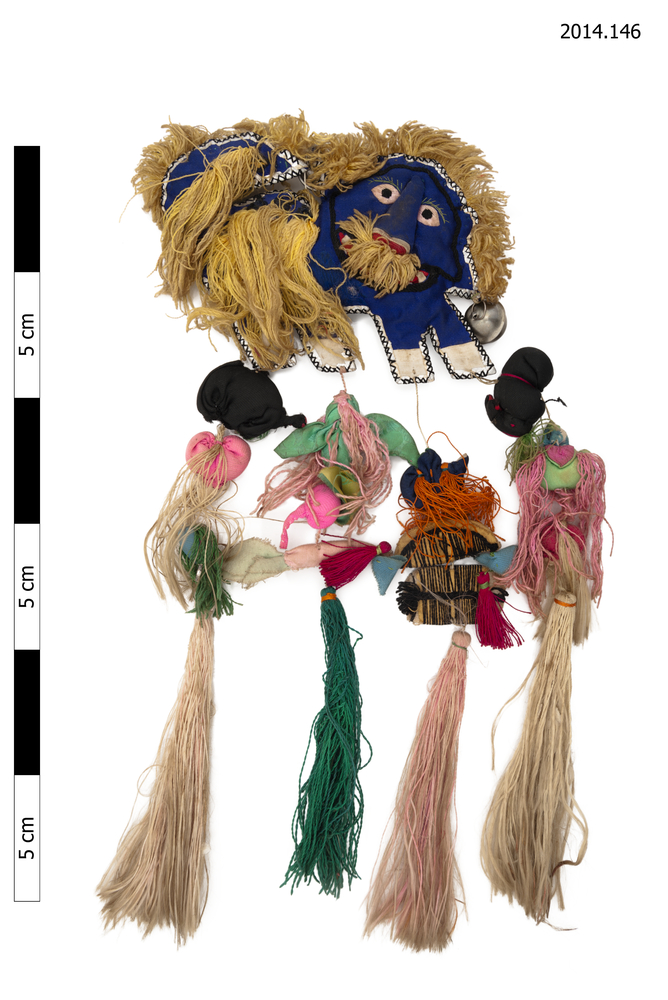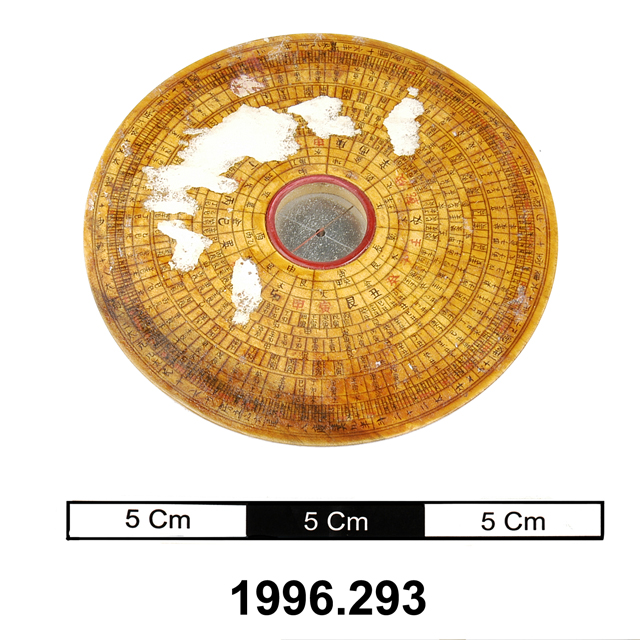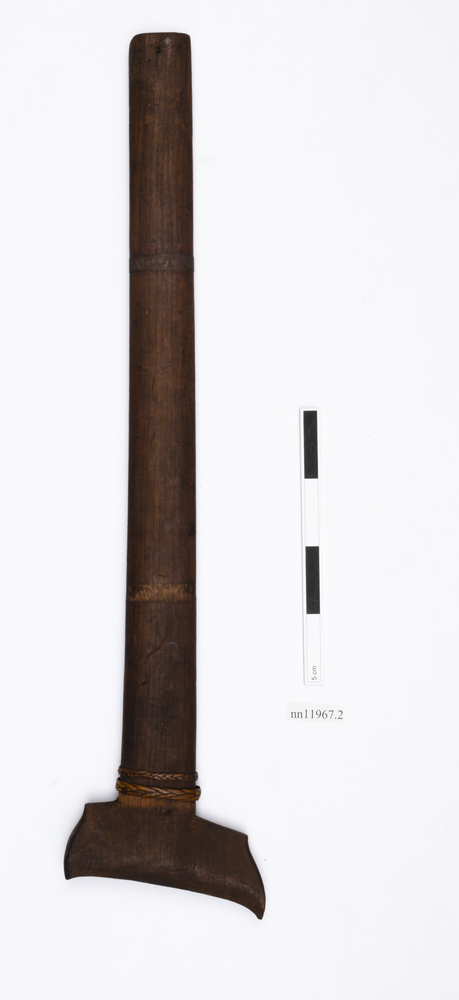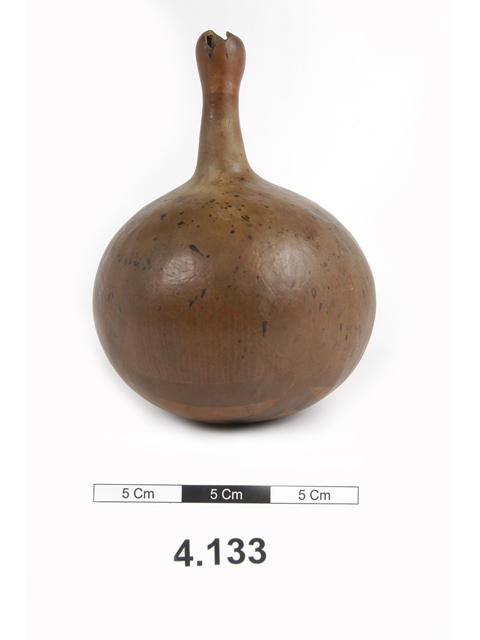


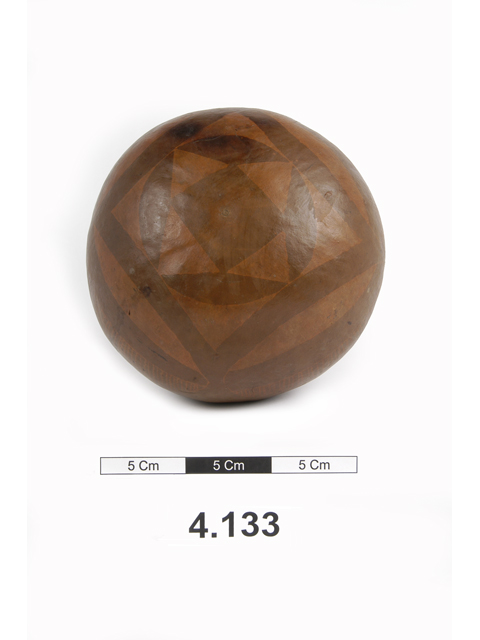
A finely decorated gourd water container, which is large and decorated on the sides and base with shapes and lines in pigment.
Grown Water-Bottle, Ipu, Hawaii. This object is an excellent example of the understated refinement of form to be found in many everyday items of traditional Hawaiian culture. A grown container, the bottle gourd (Lagenaria siceraria) is among humanity's most ancient cultivated plants. Hawaiian gardeners specialised in the careful training of such bottle gourds (hue) into shape during their growth, carefully setting the gourd upright on a grass cushion and tying it into a structure of supporting canes. In this way, the fruit grew into its desired rounded shape. Long-necked globular water vessels such as this were known as ipu, and are recorded from the earliest records of the 1770s onwards. Although it has faded greatly with age, this example still bears the strong geometric scheme of black and white zones and sets of parallel lines typical of two-dimensional Hawaiian decoration. Gourds were absolutely central to everyday Hawaiian life, and performed many roles from being drinking vessels to containing the bones of the dead. Gourd, pigment. Early 19th-Century. Formerly in the private collection of W.D. Webster.



